Next on my agenda in London 2017 was Leighton House.
|
As we left the palace, we couldn't resist having a bite to eat...accompanied by some rather aggressive pigeons fighting over a neighbor's crumbs. As you can see, it was a glorious day, and we decided to roam the Gardens a bit, pausing to admire the statue of Queen Victoria sculpted by her daughter, Princess Louise. We strolled the paths and enjoyed the views of this green island in the center of the city. Eventually, we arrived at the Peter Pan sculpture...one of my favorite London statues. Author J.M.Barrie commissioned the statue from artist Sir George Frampton, placed here in 1912. Do you love it too? Almost at Lancaster Gate, we found the Italian Garden, an ornamental water garden which supposedly was a gift from Prince Albert to his wife, Queen Victoria. And a very pretty sight it is! The last view I will show is Trafalgar Square, always the center of a London visit. On the left is the Fourth Plinth, a site for changing contemporary sculptures, showing Really Good, a human hand in a thumbs up gesture, It has since been replaced by a recreation of an ancient sculpture from the Mosul Museum. The original was destroyed by ISIS in 2015. In the center of the picture is the National Gallery and on the right is St. Martin in the Fields, built by James Gibbs in 1722.
Next on my agenda in London 2017 was Leighton House.
0 Comments
I have visited Kensington Palace many times over the year, sadly not to have tea with Princess Margaret, or hobnob with Diana and Charles, not even to baby-sit for the little Cambridges. The palace has changed a bit over the years, never quite settling on a "brand" for very long at a time. Of course, it has almost always shown the rooms built for King William and Queen Mary by Sir Christopher Wren, and the rooms in which Queen Victoria spent her childhood. It has served as a repository and exhibition space for historic costumes. Kristine Hughes Patrone and I could not resist another visit to see how rooms had been recently refurbished and to see the Diana Wardrobe display. We walked up to the south side of Kensington Palace and found our way to the entrance, where we had to choose from several routes through the exhibition and state rooms. Kensington Palace is the official London residence of numerous members of the royal family, such as the Duke and Duchess of Cambridge, Prince Harry, and Prince and Princess Michael of Kent. Their apartments are strictly off limits for tourists. Below, Queen Anne, who ruled after her brother-in-law, King William III, died. I have always pitied the sad Queen who endured seventeen pregnancies but none of her children survived to the teen years. 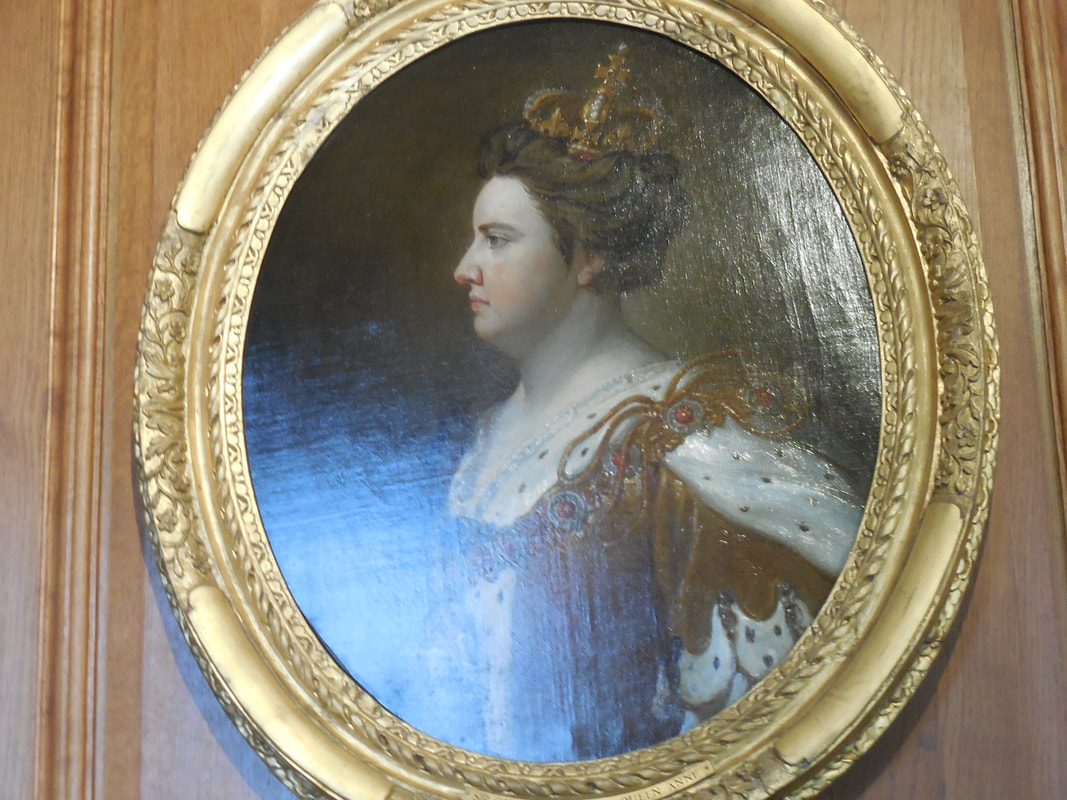 Queen Anne, 1665-1714 Queen Anne, 1665-1714 Beginning in 1689, Kensington Palace was the home of five monarchs, William III and Mary II, Anne, George I, and George II. Below, pictures of the Queen's Apartments. We next proceeded to a display Diana: Her Fashion Story. As Princess of Wales, Diana (1961-1997), captivated the world with her dedication to her sons, her causes, and her wardrobe. Next, we visited Victoria Revealed. The future Queen grew up in Kensington Palace. Her father, Prince Edward, Duke of Kent and Strahearn fourth son of George III, died before she reached one year of age. Victoria's mother, the former Princess Victoire of Saxe Coburg, raised her under very strict conditions, greatly influenced by her adviser, Sir John Conroy, a man the future Queen despised. Once she succeeded to the throne upon the death of her uncle, King William IV, Victoria moved out of Kensington Palace and into Buckingham Palace, which has housed the British monarchs ever since. Up to her succession to the throne at age 18, Victoria's activities were under constant surveillance. No wonder she couldn't wait to move into a "place of her own." Another special exhibition honored the achievements of the "Enlightened Princesses: Caroline, Augusta, Charlotte and the Shaping of the Modern World." on view in summer 2017. All of them had accomplishments that benefited their husbands and sons in ruling and in the interests of the people. For example, Caroline encouraged artists and scholars such as Handel and Newton. Several were patrons of the royal gardens where so much botanical research was done and so many new species examined. Above, l to r, Caroline of Ansbach, wife of George I and mother of George II; Augusta of Saxe-Coburg, wife of Frederick, Prince of Wales (son of George II) and mother of George III; Charlotte of Mecklenberg-Strelitz, wife of George III and mother of George IV and William IV) Mrs. Mary Delaney (1700-1788) was given a house in Windsor by Queen Charlotte where she pursued her interests in botany and created the mosaicks (above, left), paper collages, for which she was so famous. The King's Staircase, decorated by William Kent, for George I and completed in 1724, showing the Court in fanciful poses. Near the conclusion of the paths through the palace is the King's Gallery, also decorated by artist/architect William Kent, a large elegant room in which to display the royal collections. The final rooms showed more of the paintings collection and a selection of 18th century costumes, almost too many treasures to absorb. We'll go outside next.
Among the Gallery's most famous pictures is the pre-Raphaelite painting by Dante Gabriel Rossetti (1828-82) La Ghirlandata, 1873. It portrays model Alexa Wilding playing the harp and is known in translation as the Lady of the Wreath. The huge painting (214 x 297 inches) that dominates the gallery is The Defeat of the Floating Batteries at Gilbraltar, 1782 by John Singleton Copley (1738-1815). Completed in 1791 It commemorates the defeat of the Spanish naval armada. The treasured canvas hung in the old Guildhall Art Gallery until April, 1941, when it was moved for safekeeping, jut three weeks before the gallery was destroyed by aerial attack. A special wall in the new gallery had to be designed to display it. Copley was born in Boston, MA, and went to Europe to study in 1774. After establishing his reputation in London, he never returned to America; he is buried in Surrey. Among the excellent Victorian paintings are many charming views of children. Above is The First Leap, Lord Alexander Russell on his pony Emerald, 1829, by Edwin Henry Landseer (1802-1873). John Everett Millais (1829-1896) painted the two canvases of the little girl, entitled, left, My First Sermon, 1863, and right, My Second Sermon, 1864, Who says the Victorians had no sense of humor? I recommend a visit to the Guildhall and the Guildhall Art Gallery, and don't miss the church nearby, St. Lawrence Jewry, the official church of the Lord Mayor of London and the City of London Corporation. St. Lawrence Jewry was first built in 1136 in the old Jewish quarter of London. After the Great Fire of 1666, it was rebuilt by Sir Christopher Wren, and re-opened in 1677. Damaged again in World War II, it was restored once more. Memorial window to Sir Christopher Wren in St. Lawrence Jewry. Below, the church's interior. Next on my 2017 agenda for London was Kensington Palace.
It had been many years since I last visited the Guildhall of London, which is well worth a visit, by the way, at the left of the photo above. But my goal was the Art Gallery, completed in 1999, to replace buildings lost in the Blitz. While excavations were underway, the remains of a Roman Amphitheatre were discovered and that was my initial goal. To enhance the very few actual remains (look to the right above at what is left of a wall), illuminated drawings illustrate the appearance from the time of the Romans in Londinium, which lasted four centuries. Above and below, fragments of walls and entrances on the east side of the original amphitheatre. Representation of gladitorial combat in the arena. A skull found here with evidence of injuries consistent with those probably suffered by gladitorial combatants. Maps show where the arena was located and the size of the city of Londinium...remember the Romans were in Britain for four centuries. From the villas unearthed in the south to Aqua Sulis (Bath) to Hadrian's Wall in the north, Britain has many sites excavated to show how the Romans lived, worshiped, and fought, and died. And finally, follow the money. What was the price of enjoying the spectacle? These coins date from the 2nd century AD. Look in next week to see some of the art from "upstairs."
|
Victoria Hinshaw, Author
Archives
July 2024
Categories |

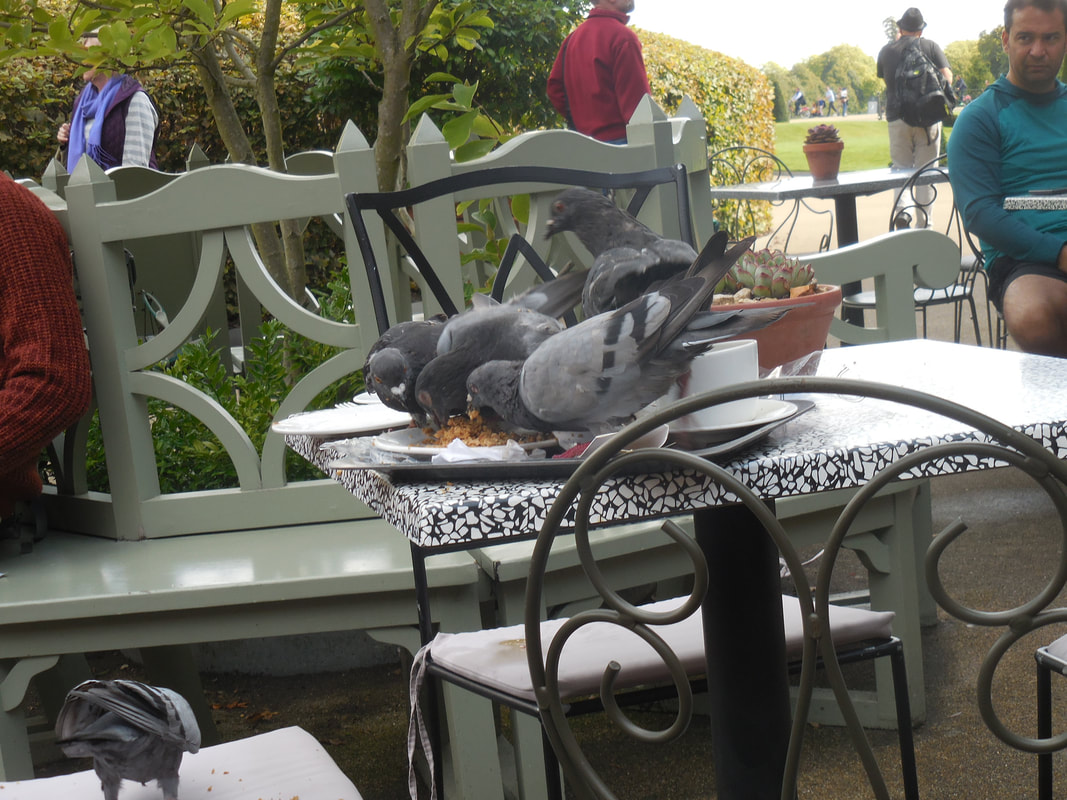
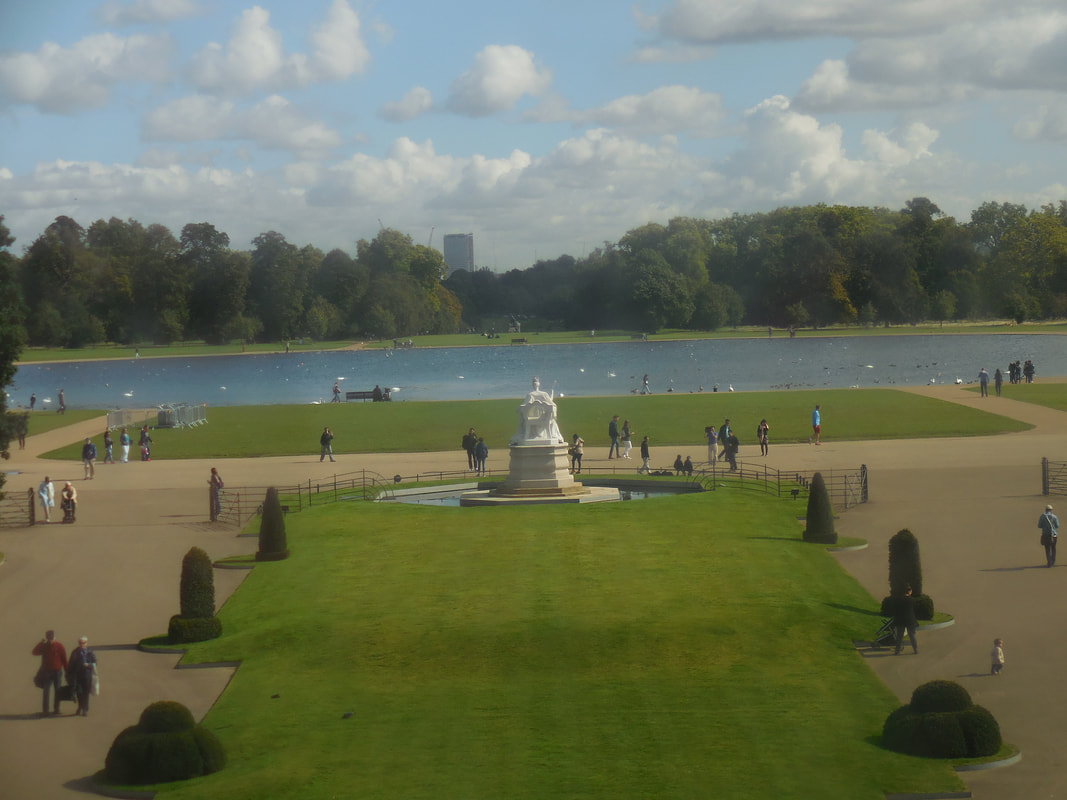
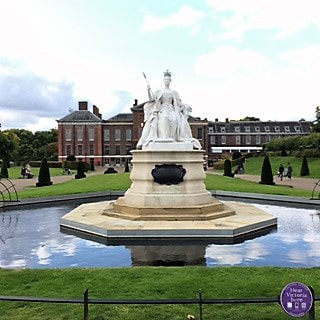
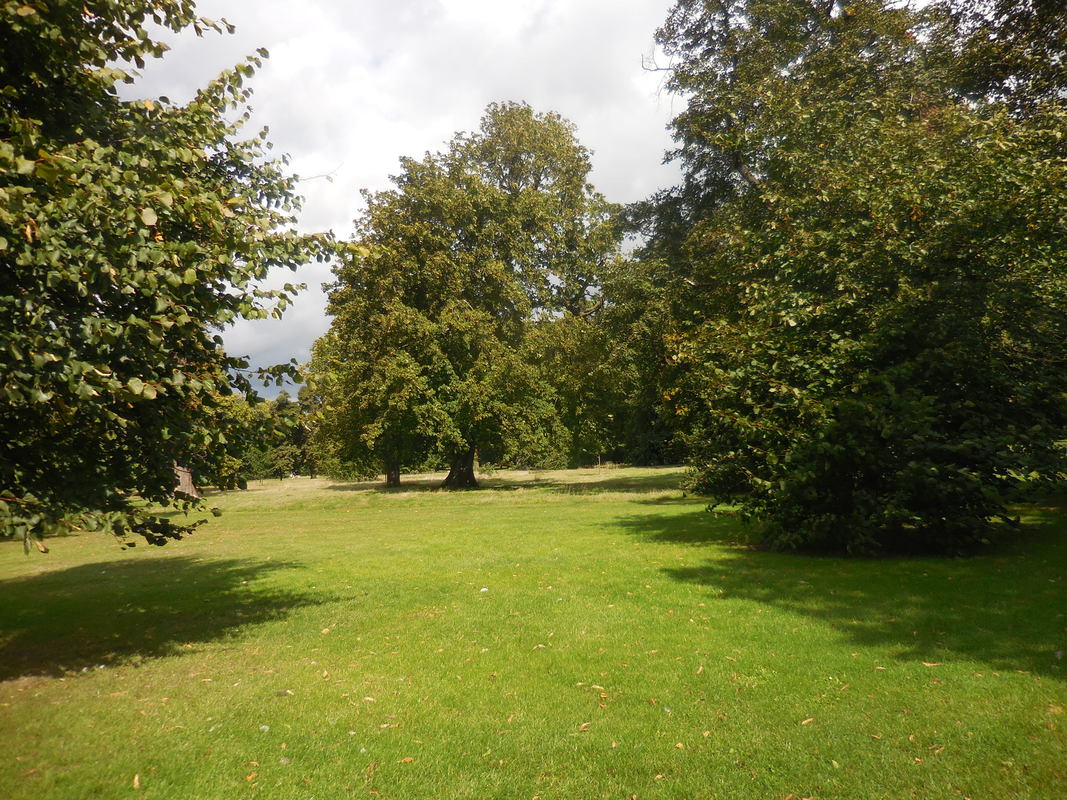
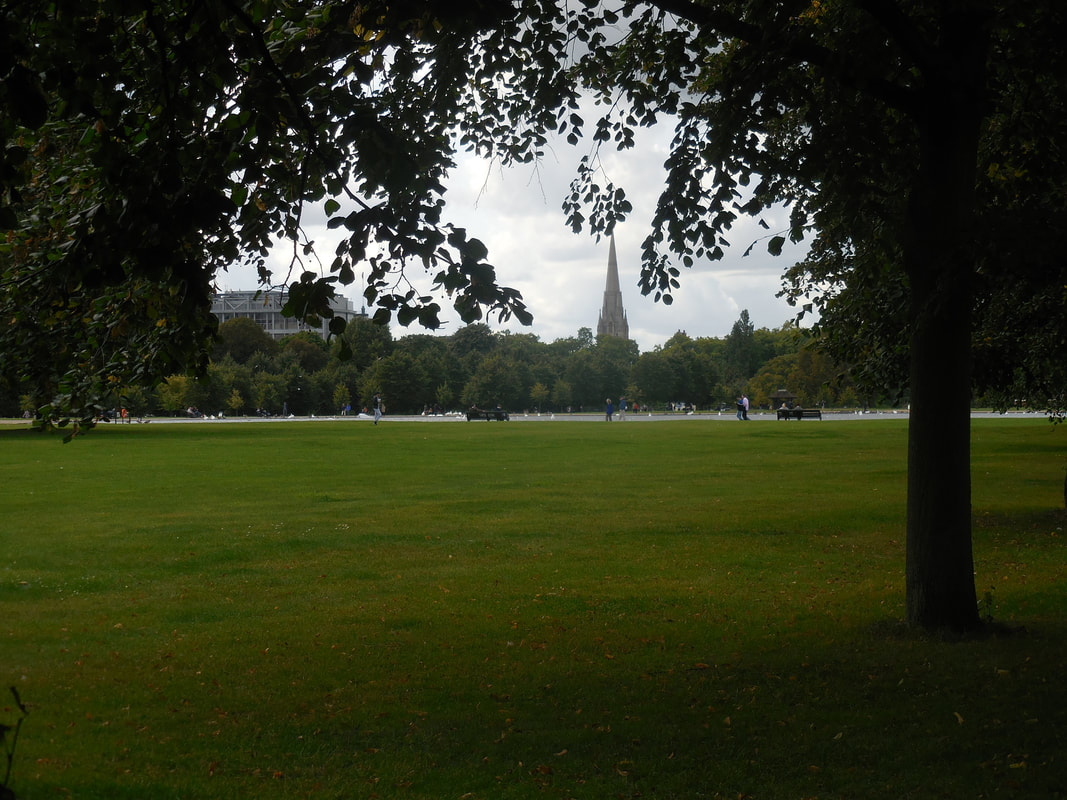
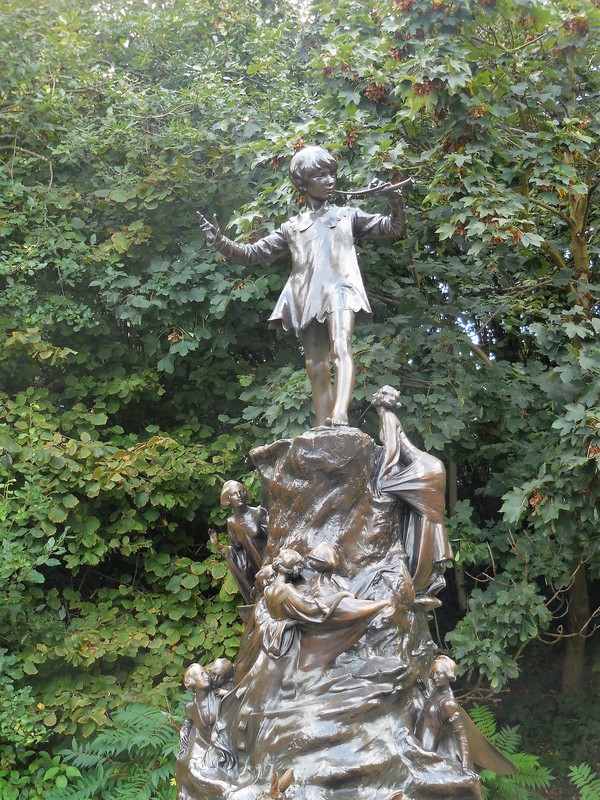
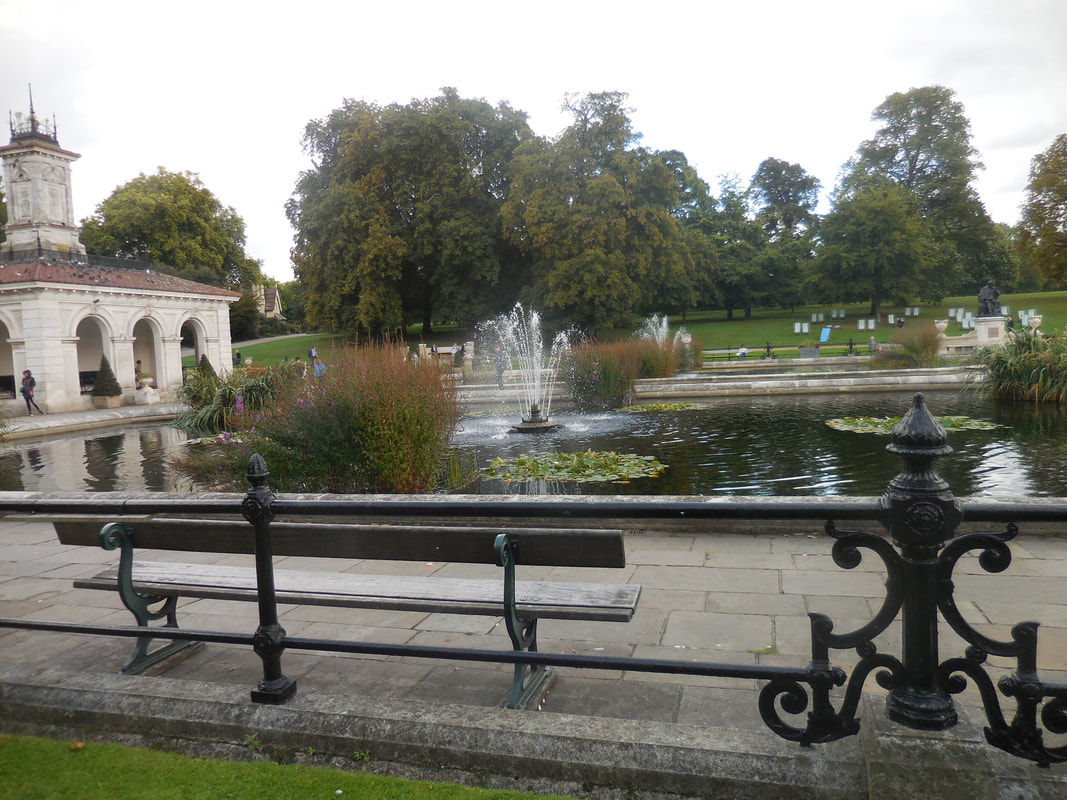
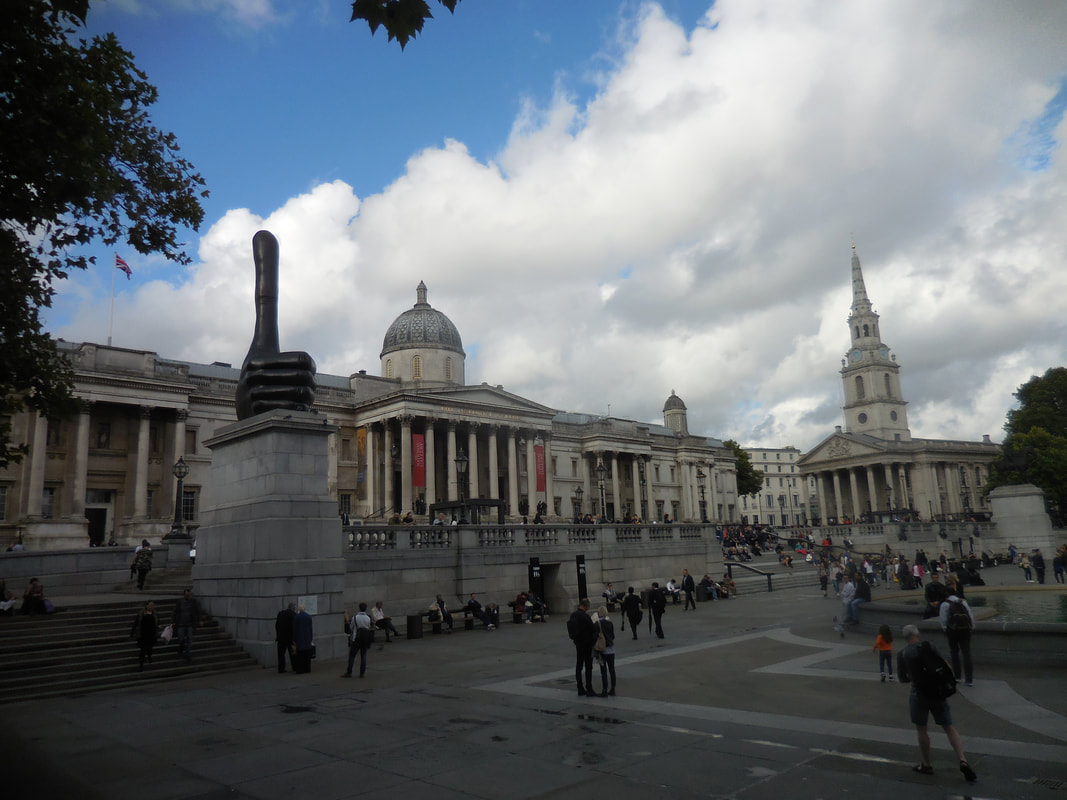
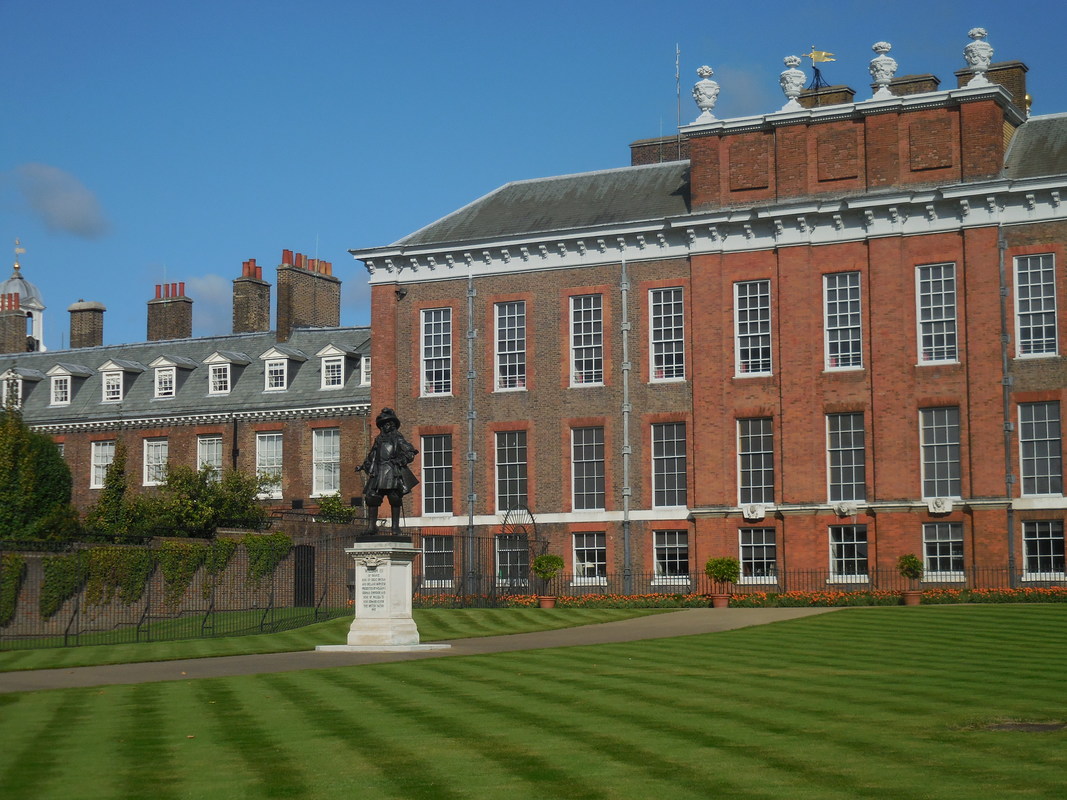
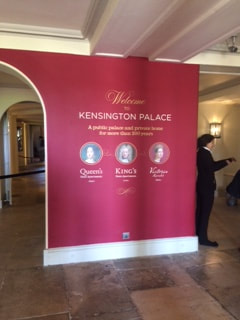
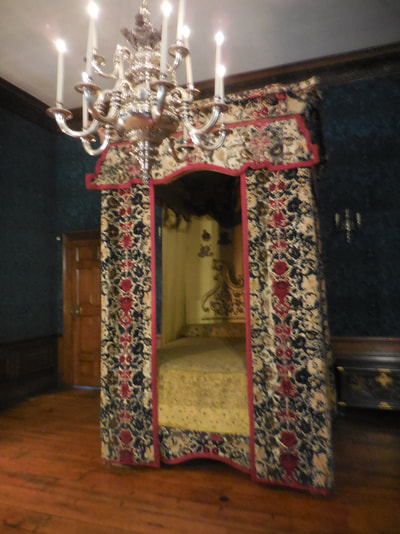

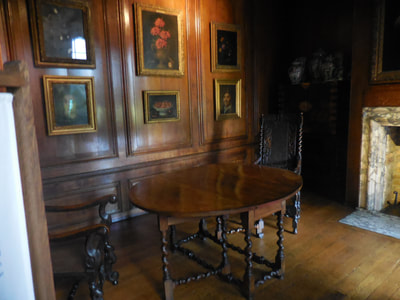
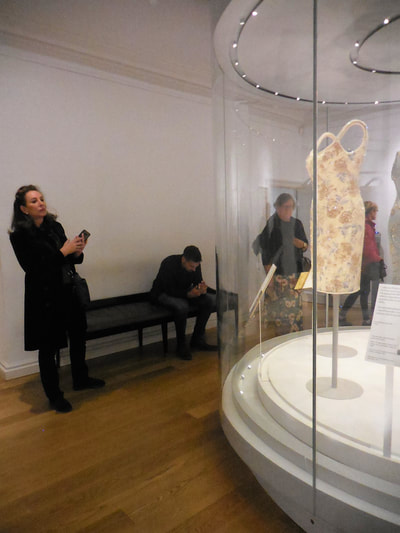
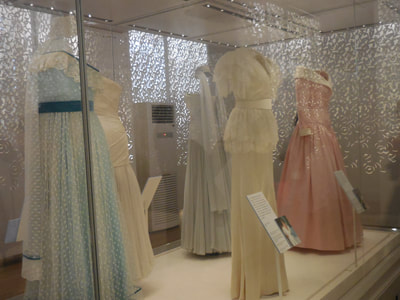


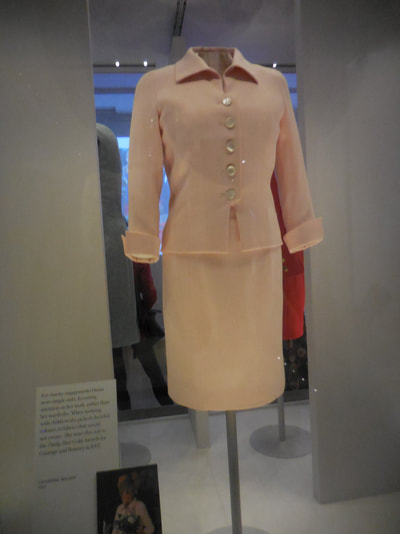

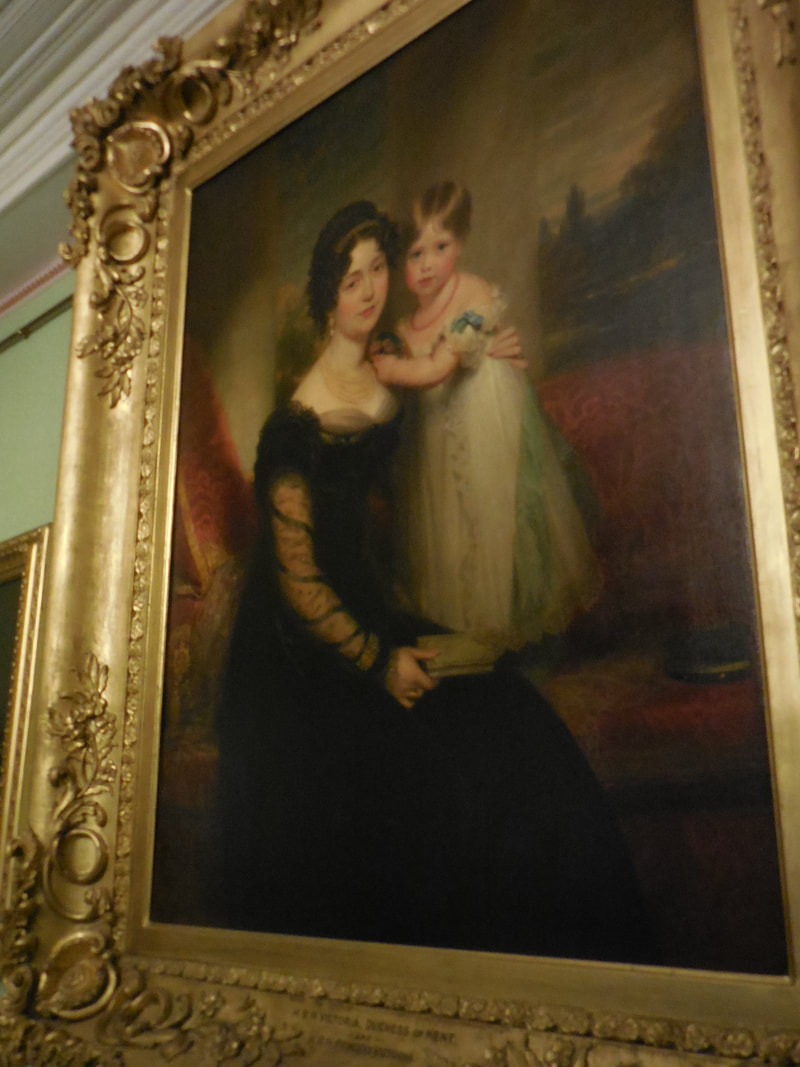
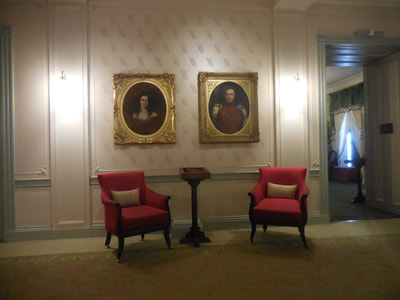
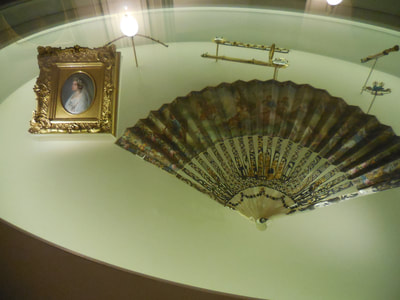
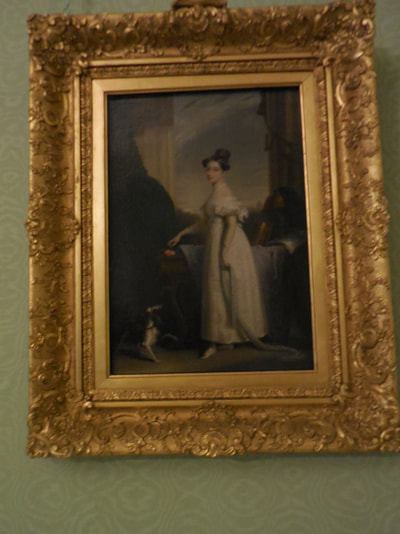
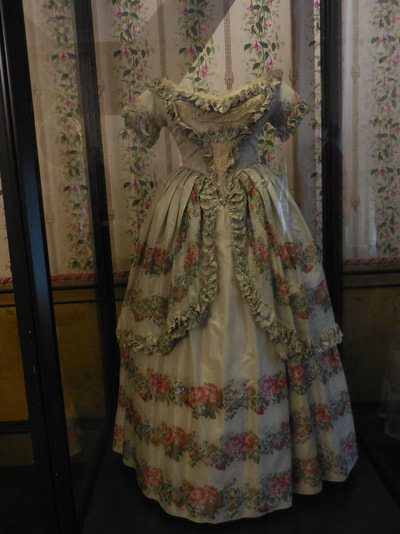
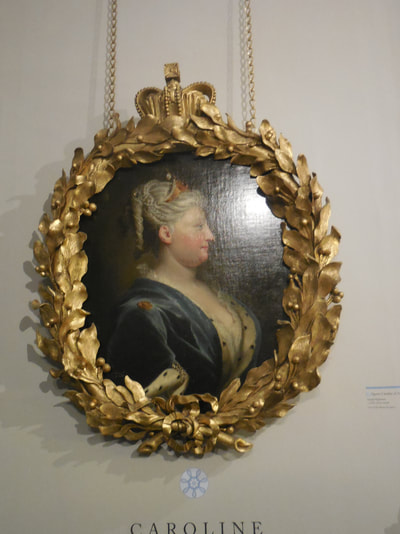
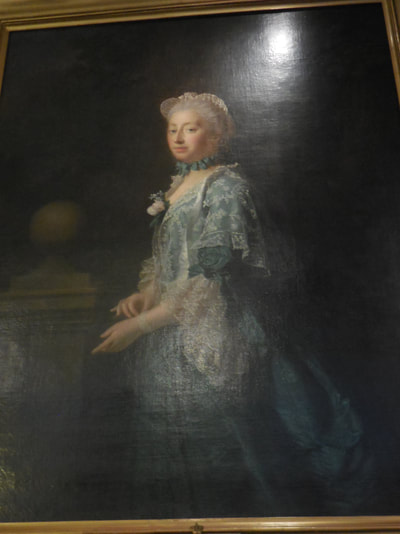
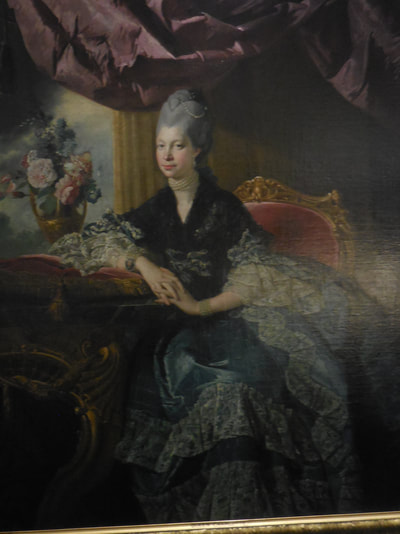
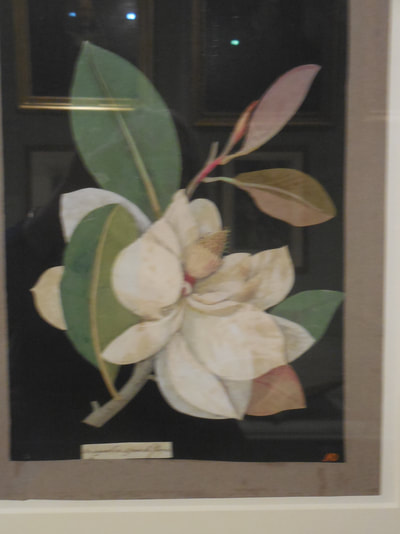
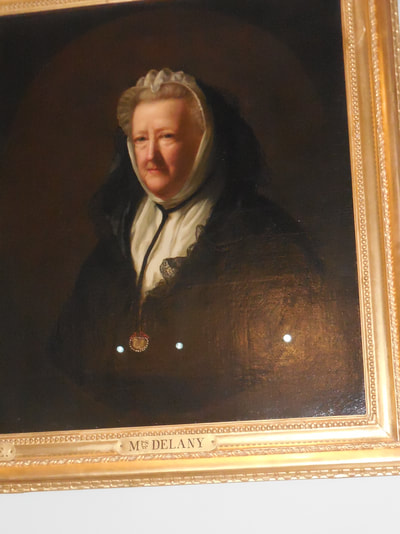
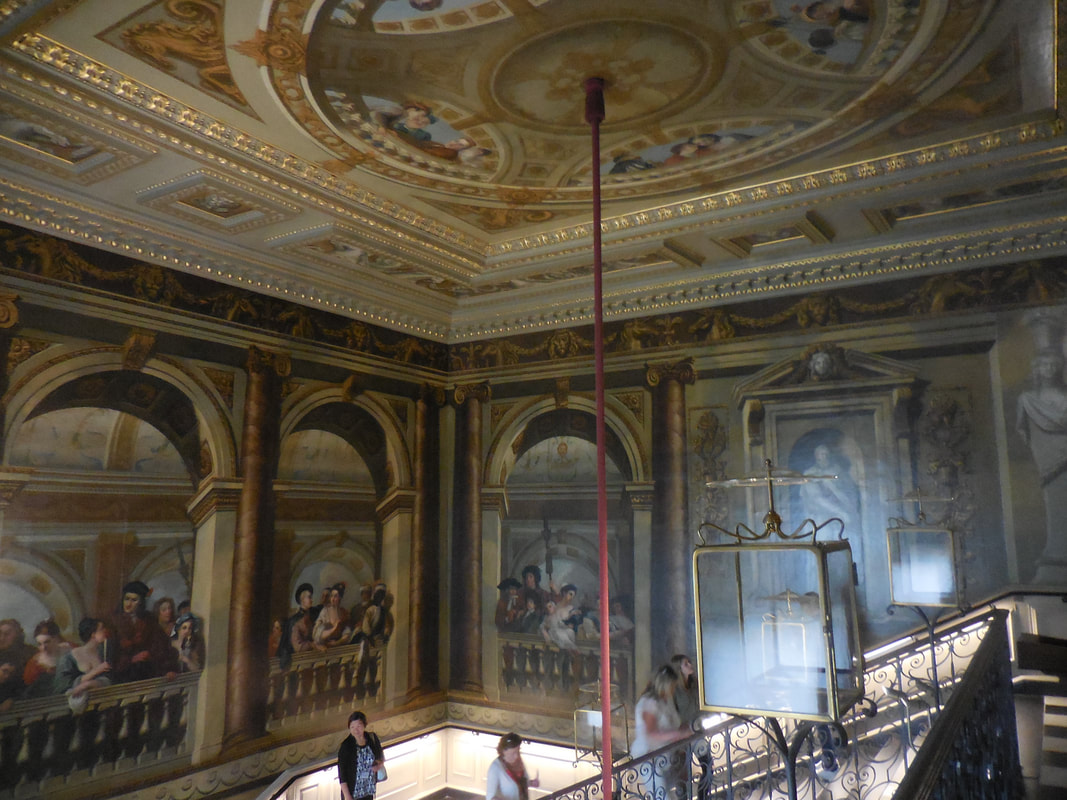
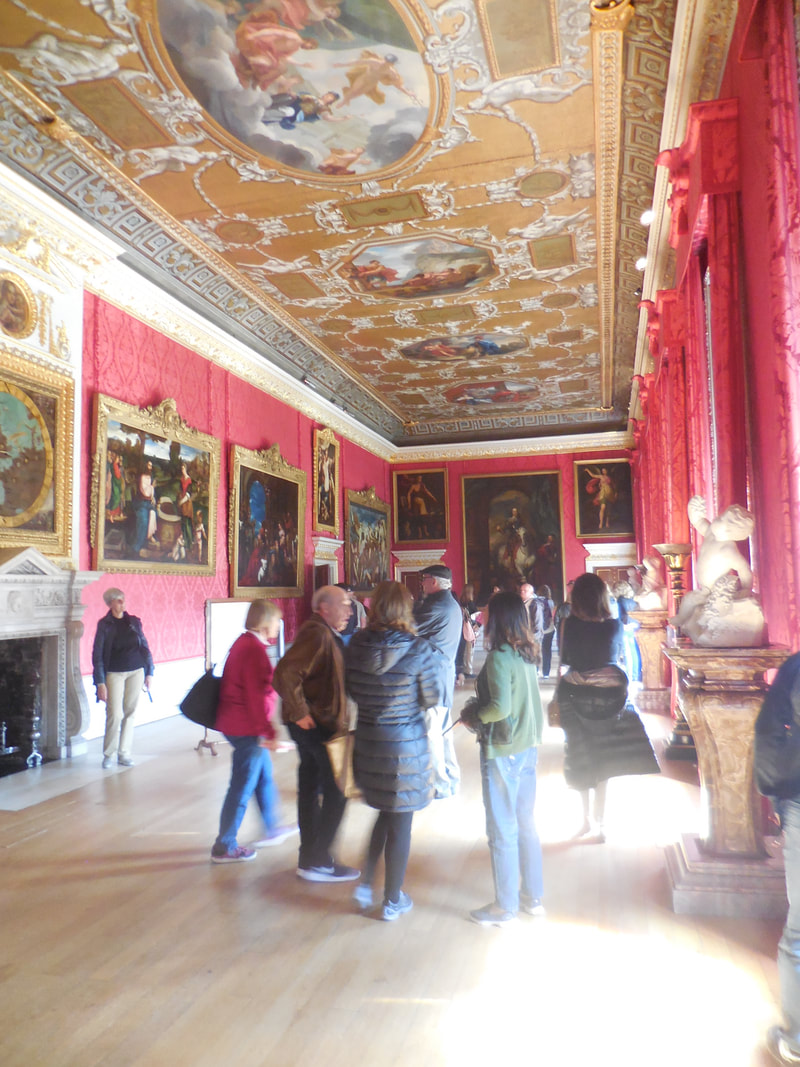
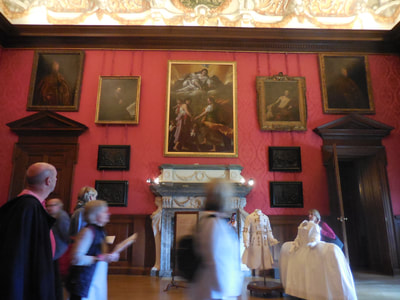
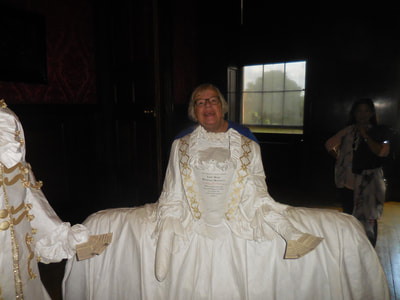
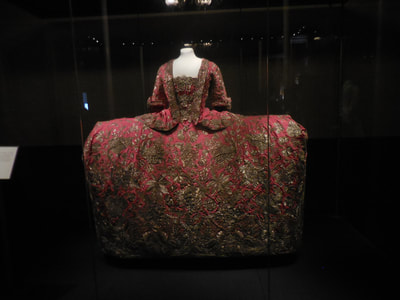

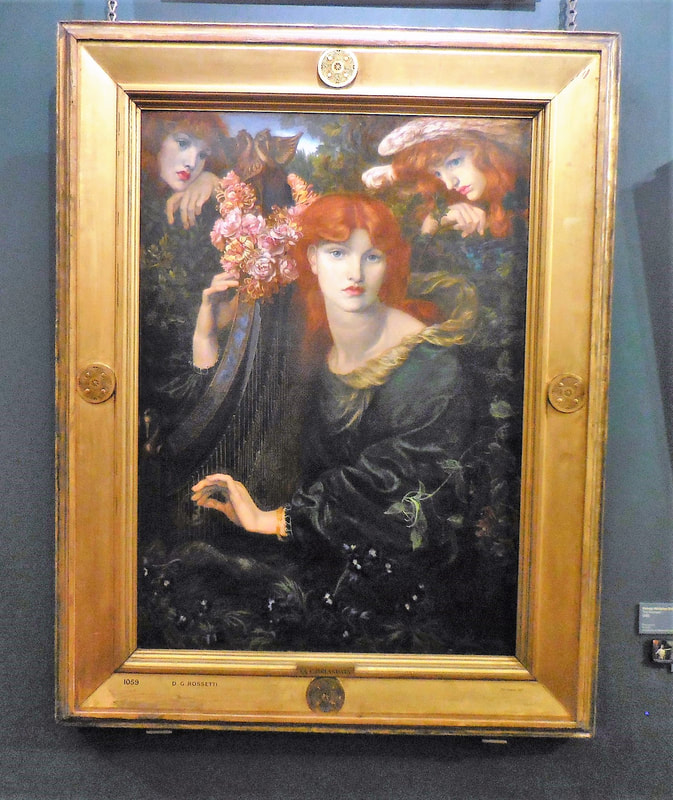
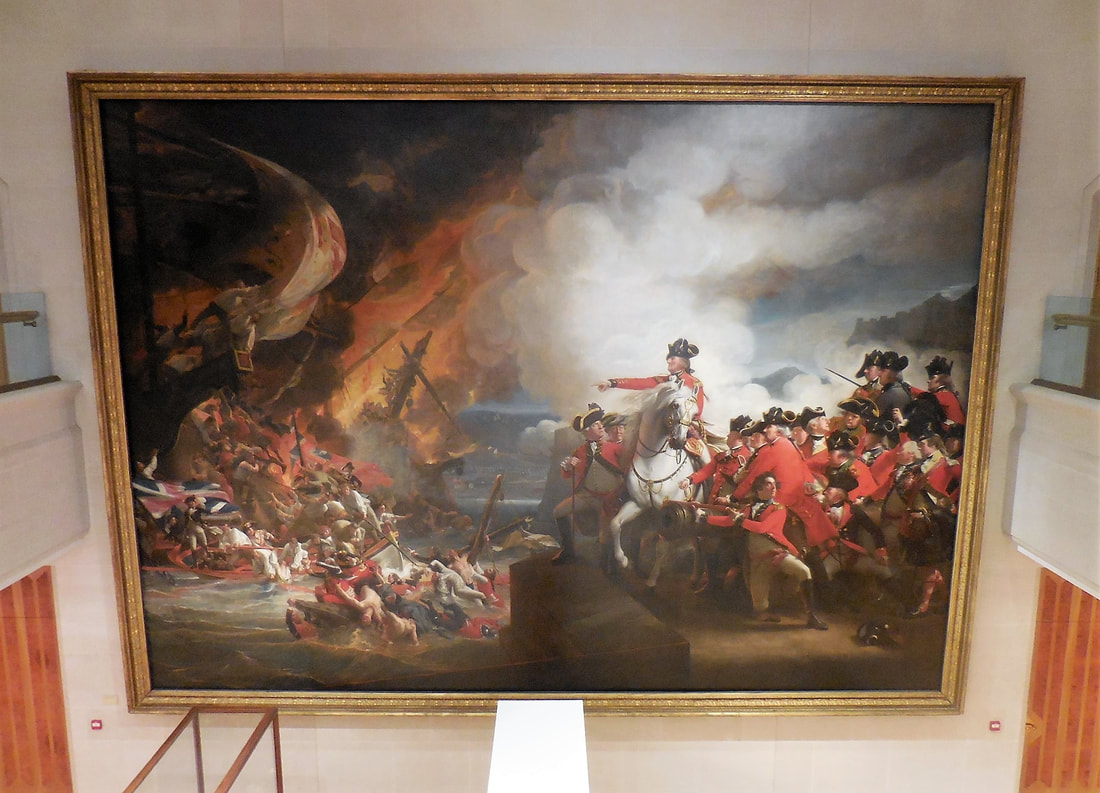
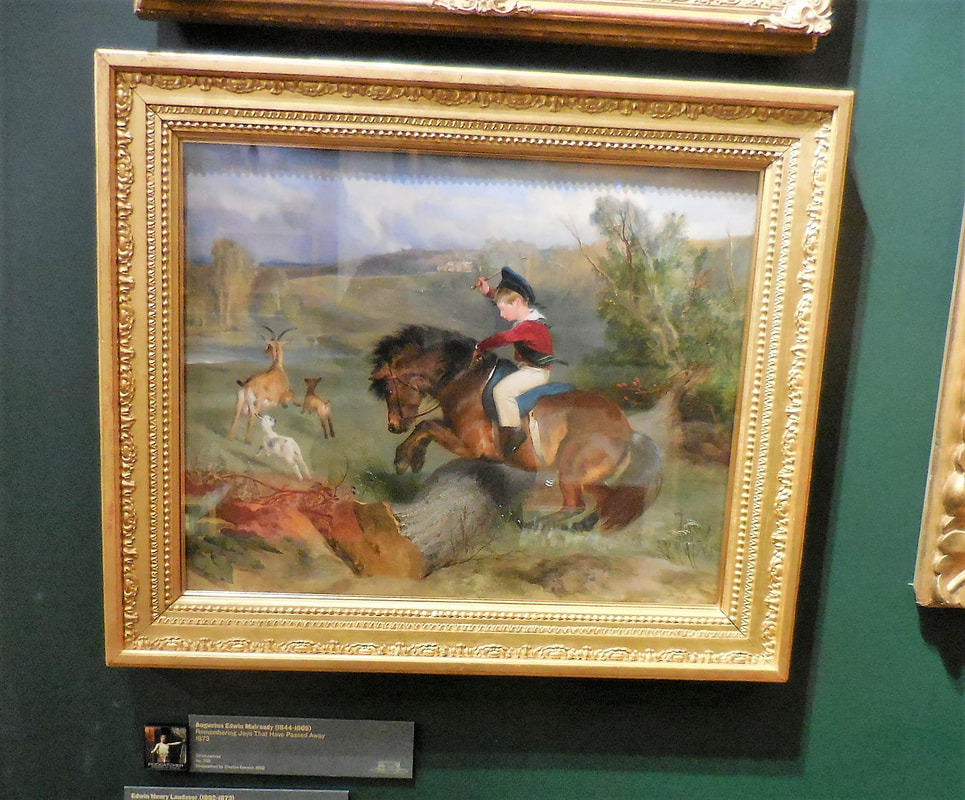
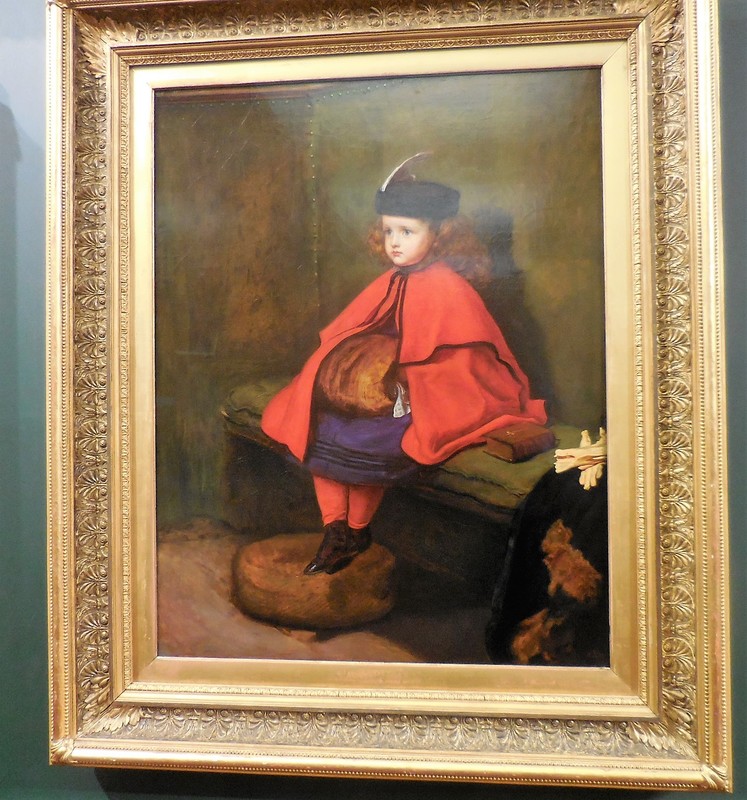

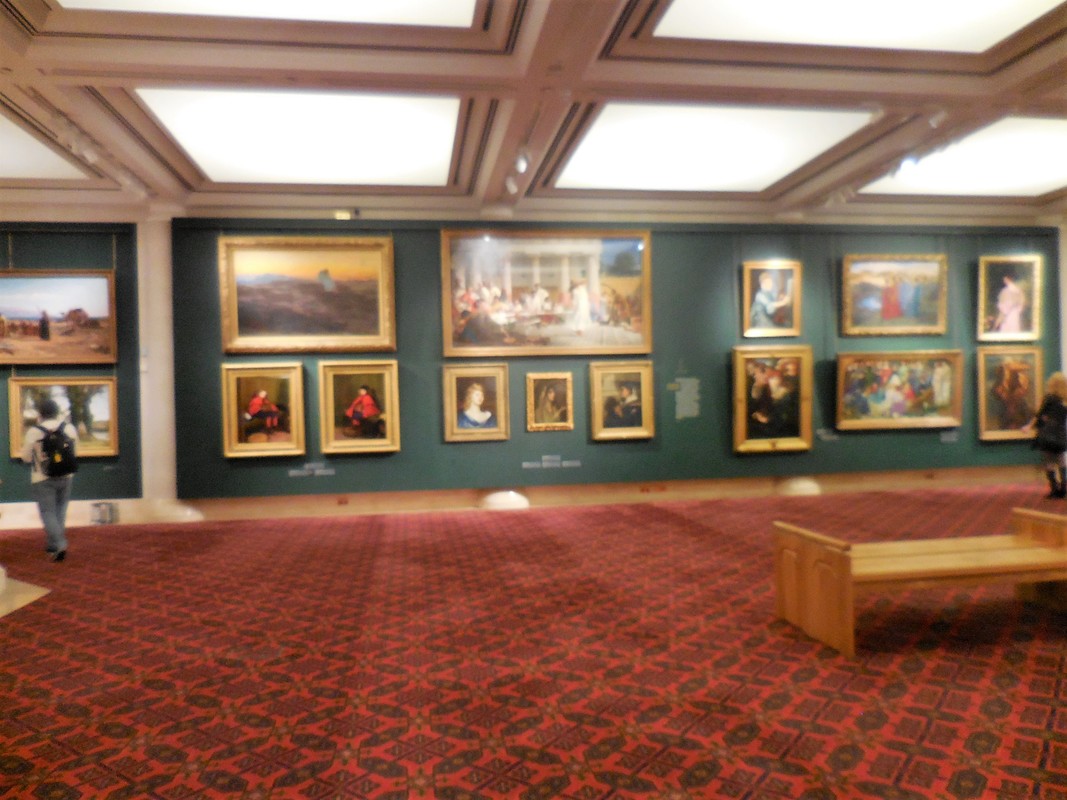
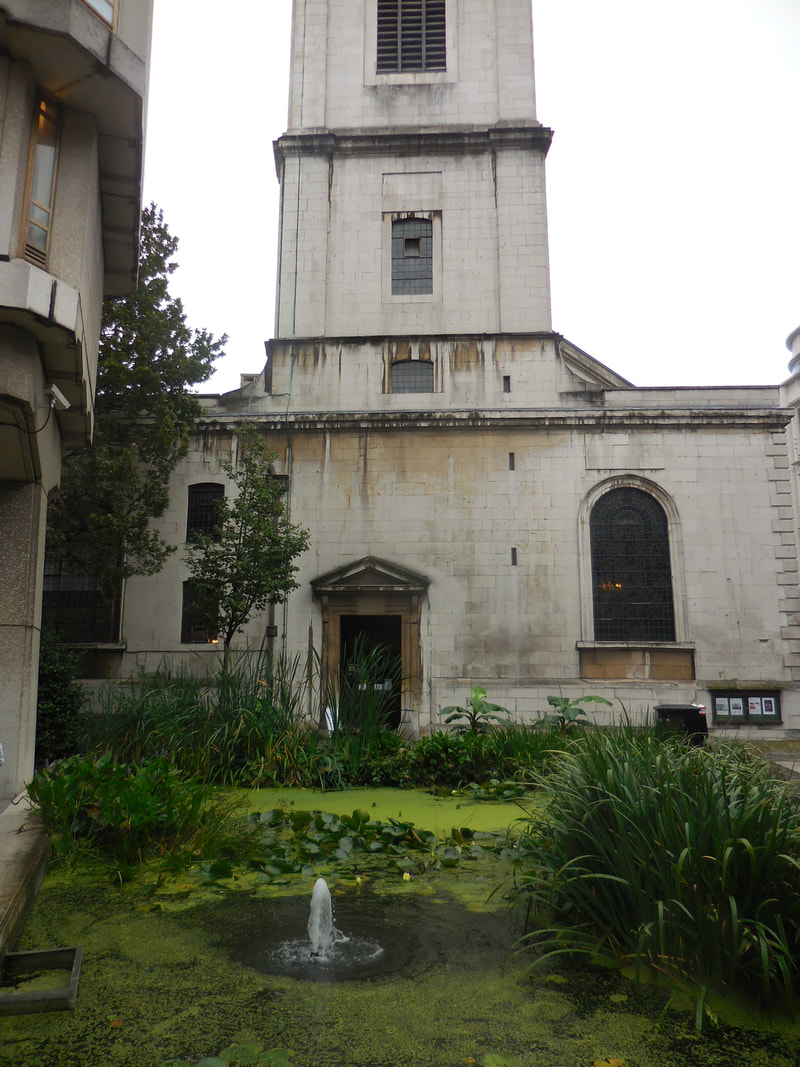
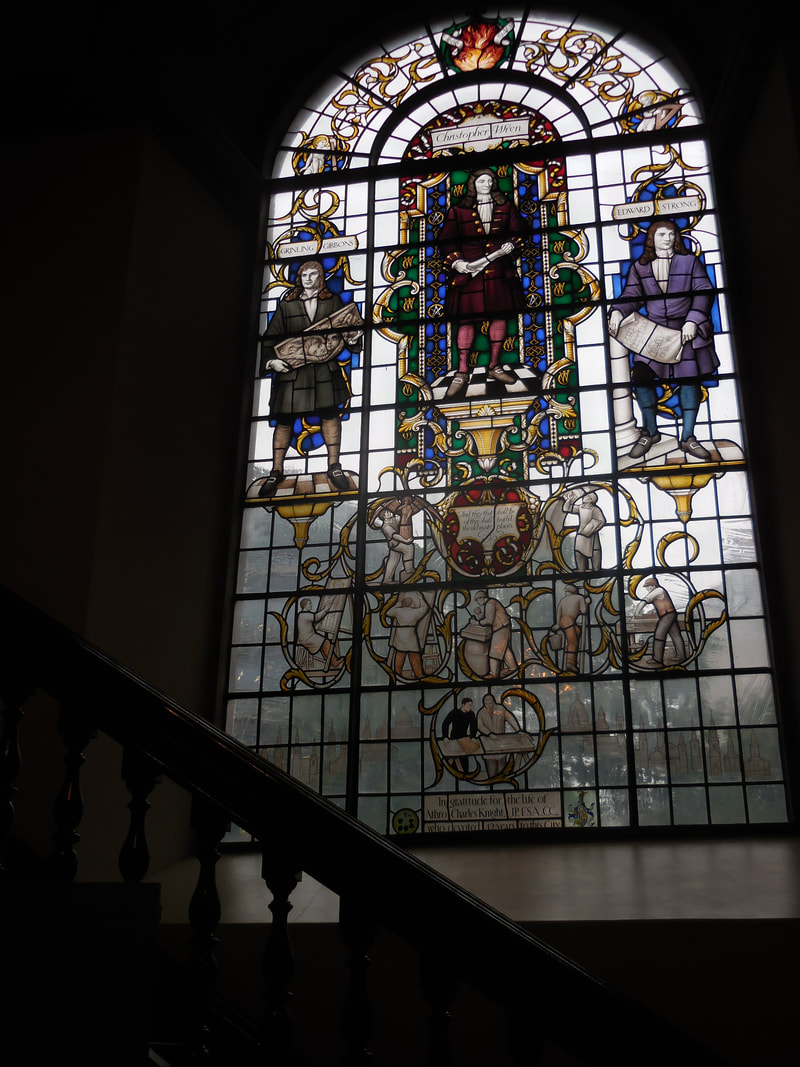
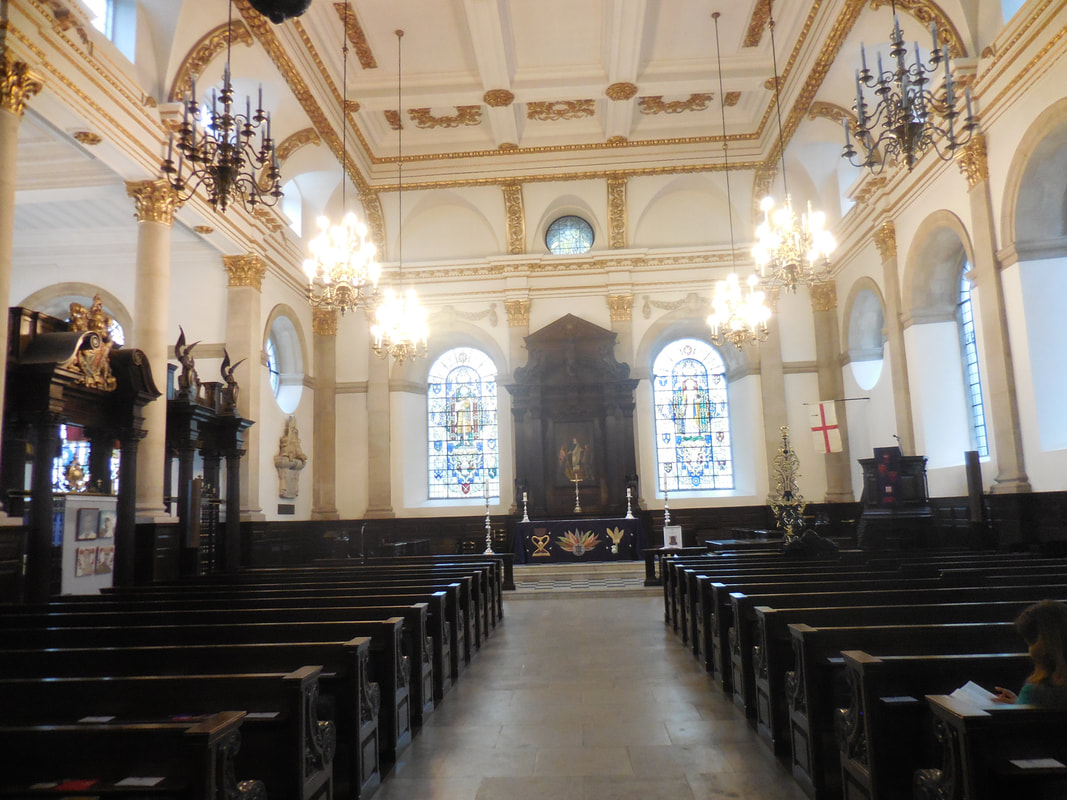
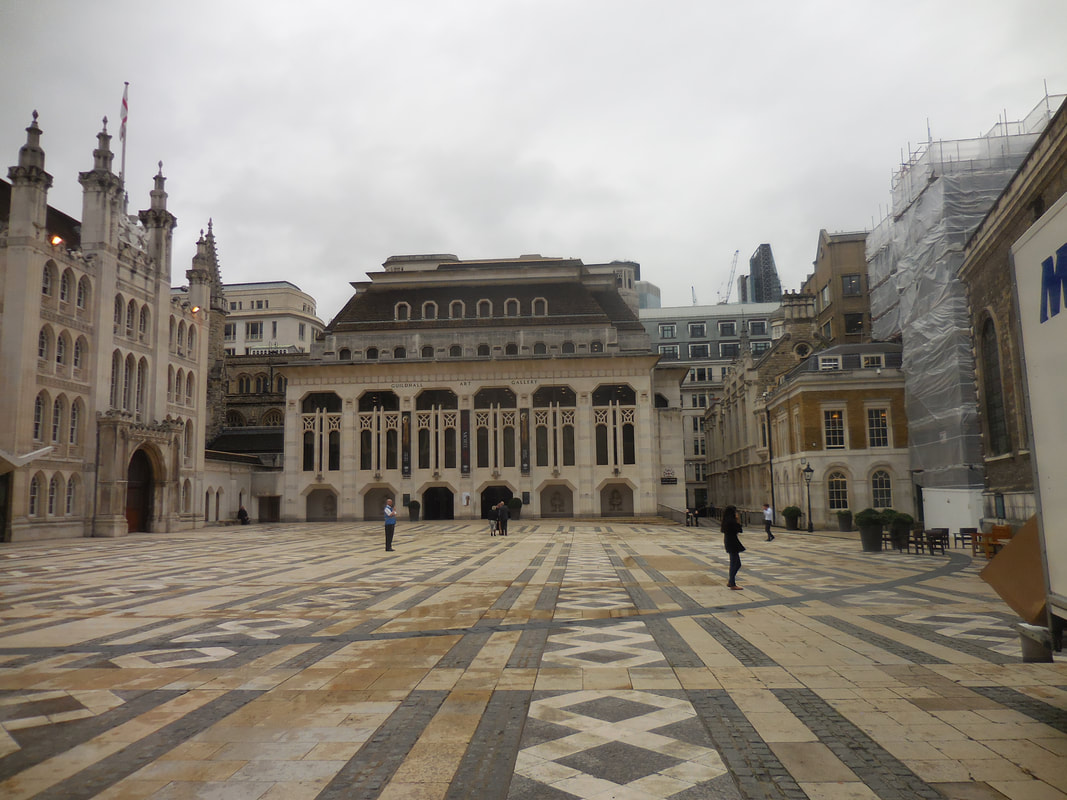
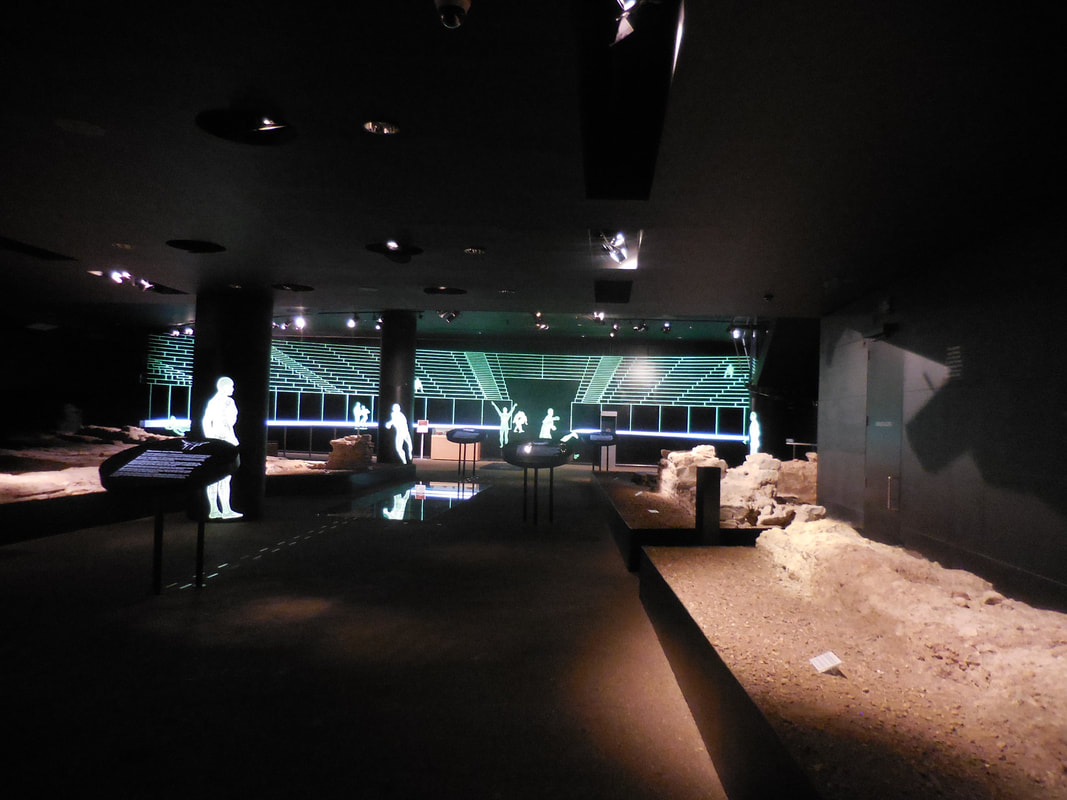

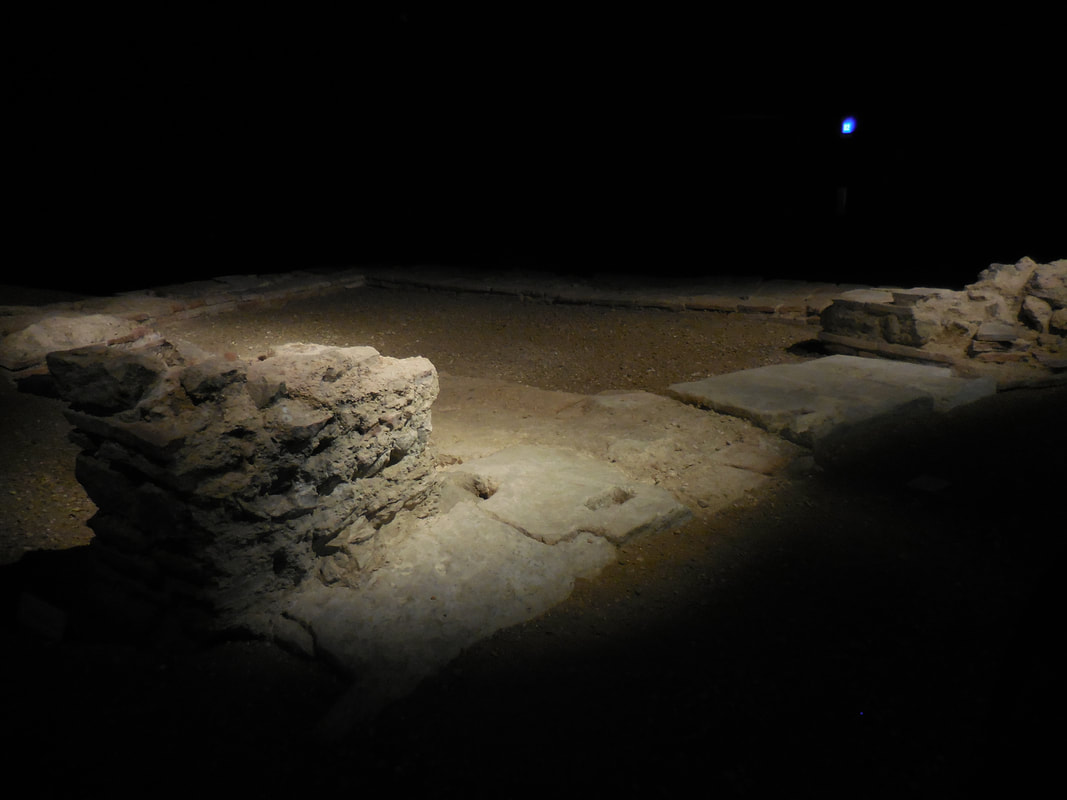
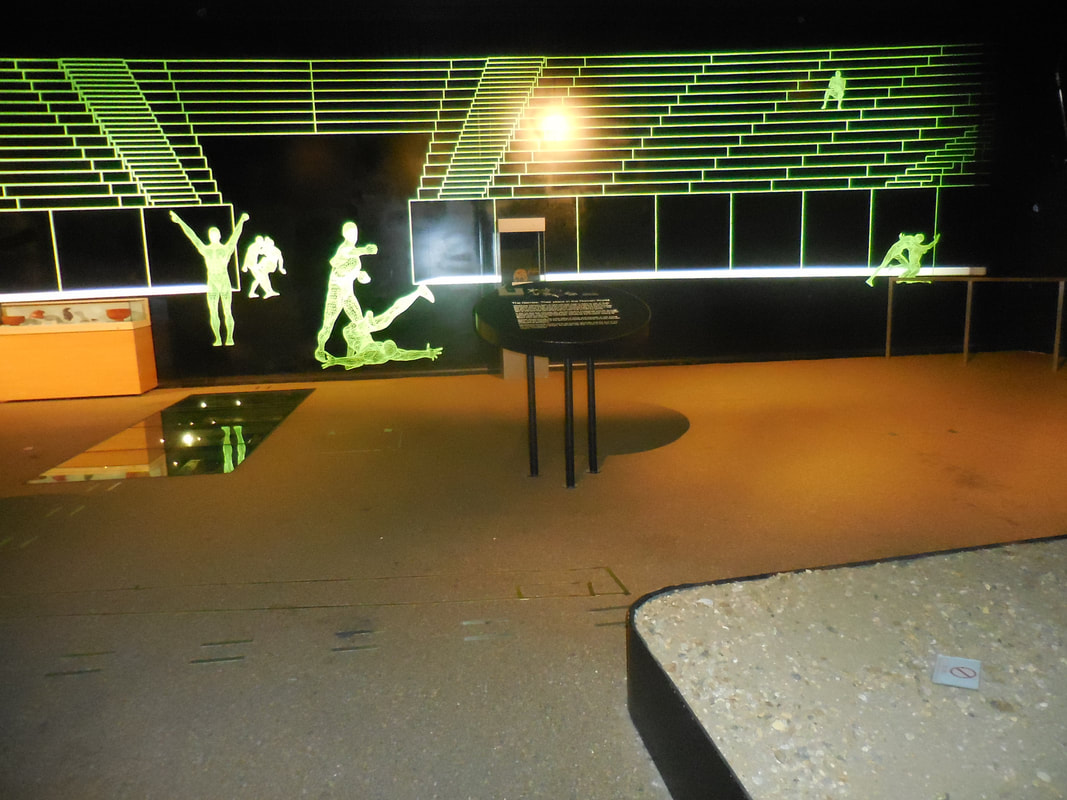
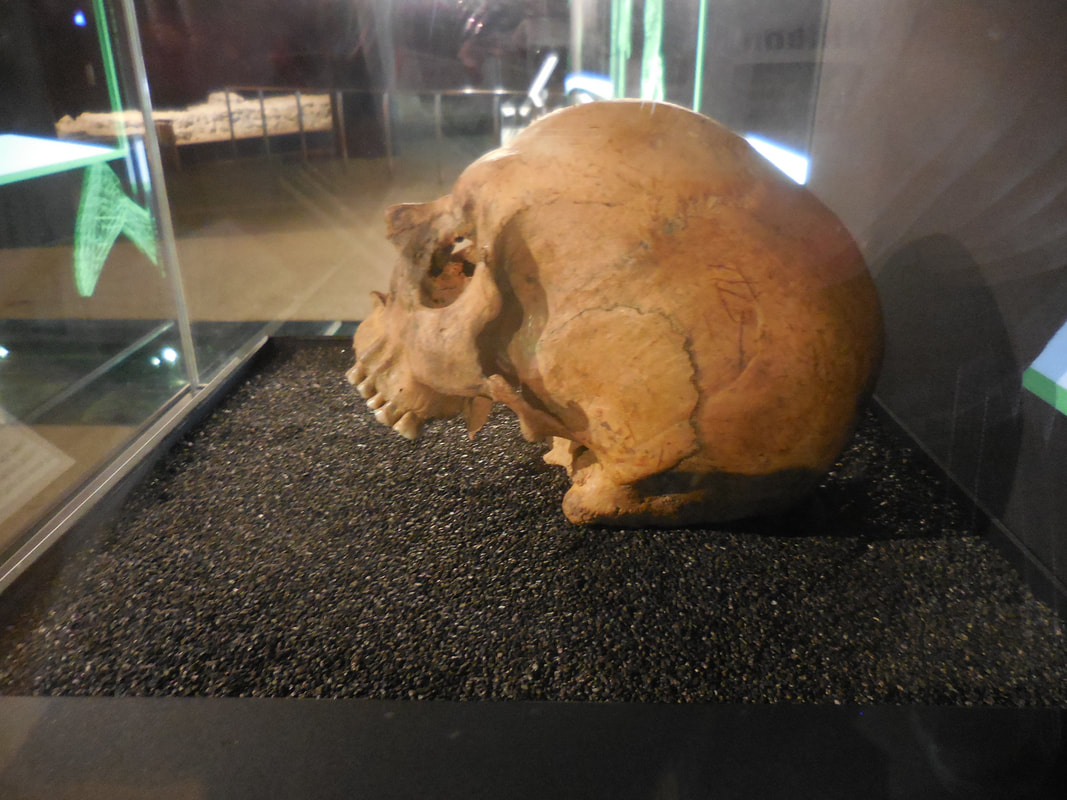

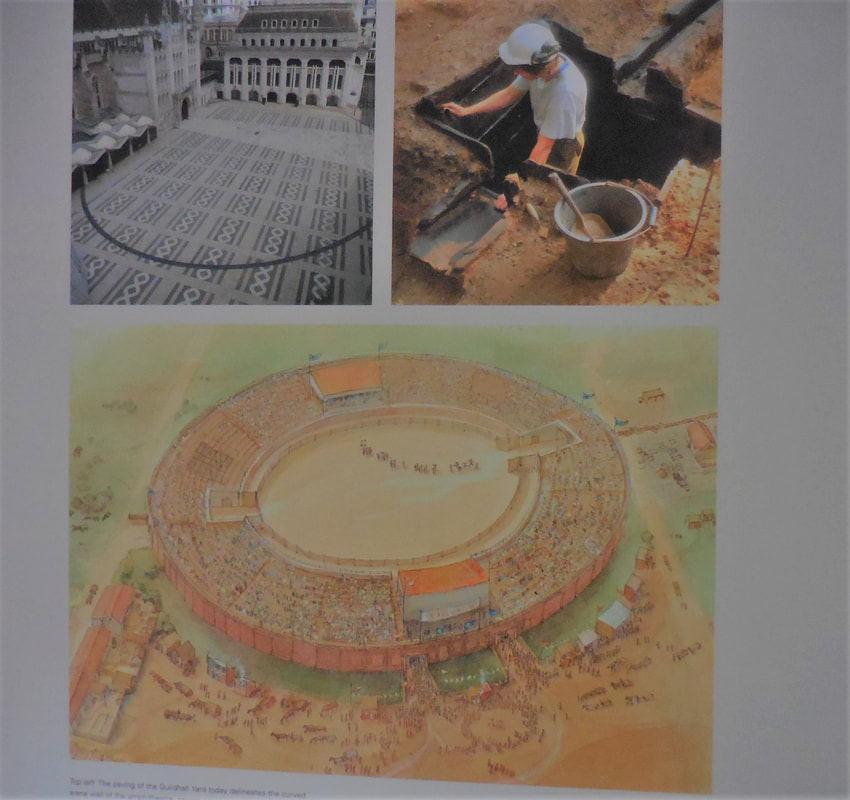
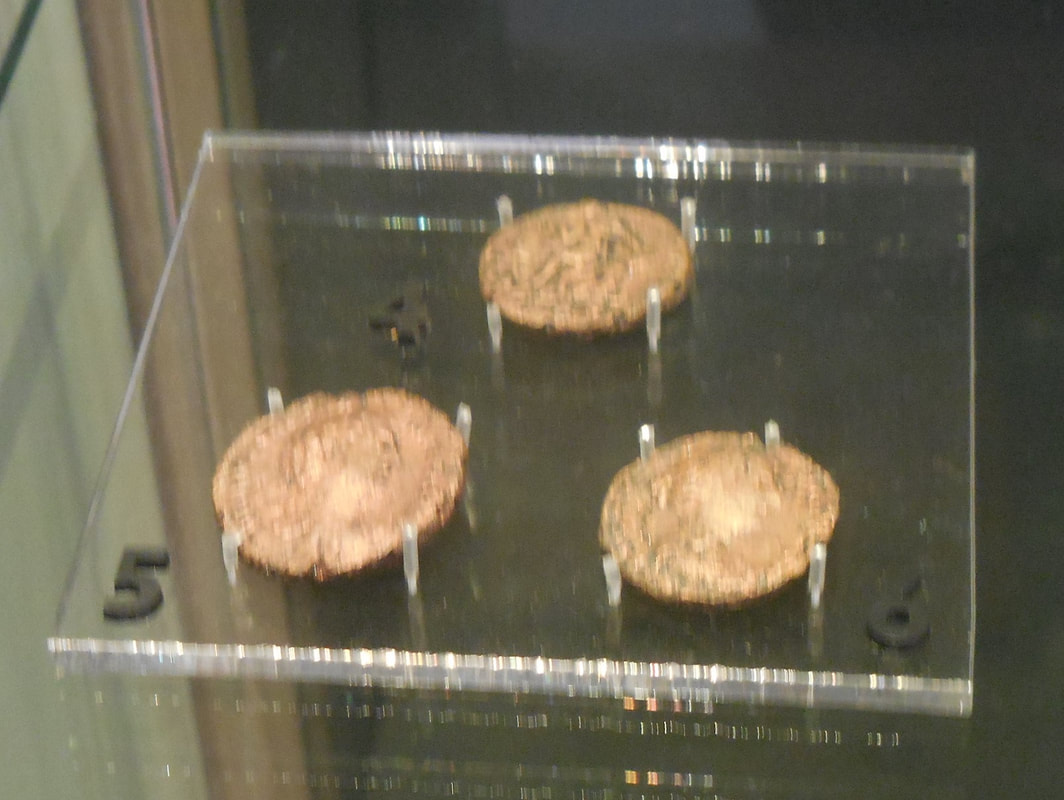
 RSS Feed
RSS Feed